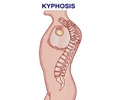Osteoporosis or ‘porous bone disease’ is a condition in which the bone mass in the body becomes reduced and the skeletal system of the body is deeply affected. It normally affects postmenopausal women.
A McMaster University researcher is alerting men and their doctors that osteoporosis isn't just a woman's problem but that the bone-wasting disease can severely afflict them, too.Dr. Aliya A. Khan, a professor of clinical medicine, and a group of five Canadian experts have developed guidelines for the diagnosis, treatment and management of osteoporosis in men. Their paper appears in the January 30 issue of the Canadian Medical Association Journal (CMAJ).
Dr. Khan, who is also director of the Calcium Disorders Clinic at St. Joseph's Healthcare in Hamilton as well as Oakville Bone Centre in Oakville, Ontario,said the CMAJ paper is intended to make physicians aware of the fact that they can no longer overlook diagnosing osteoporosis in their male patients. 'That's the bottom line. We want to bring all the research we have to the forefront and we want to bring it to the desk of Canadian physicians.'
The CMAJ paper supplements clinical practice guidelines for the diagnosis and management of osteoporosis published by Osteoporosis Canada in 2002. It provides a review and synthesis of the current literature on the diagnosis and management of osteoporosis in men.
Up until now, Dr. Khan said, doctors have underestimated even how common the condition is in men. One in eight men over 50 years of age has osteoporosis, compared to one in four women after menopause. She said scientists are 'just at the tip of the iceberg' in understanding the implications of osteoporosis for men, unlike women where it's well known which women are at risk, how the disease develops and how to treat it.
'The problem,' she said, 'is that when men sustain fractures they are more likely to die or suffer a disability.'
Advertisement
Statistically, one in three men die following a fracture, compared to one in five women, possibly because of underlying health problems such as heart disease which make it difficult for them to cope with a fracture that could involve hip surgery, prolonged bed rest and rehabilitation.
Advertisement
PRI/M











